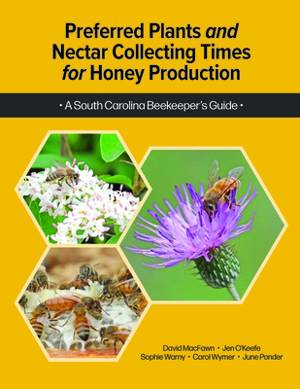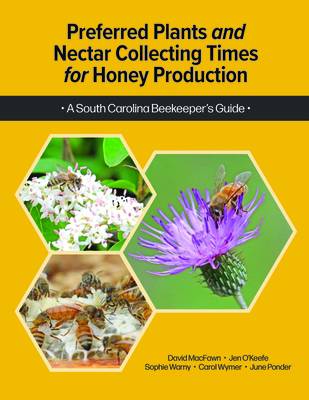
Je cadeautjes zeker op tijd in huis hebben voor de feestdagen? Kom langs in onze winkels en vind het perfecte geschenk!
- Afhalen na 1 uur in een winkel met voorraad
- Gratis thuislevering in België vanaf € 30
- Ruim aanbod met 7 miljoen producten
Je cadeautjes zeker op tijd in huis hebben voor de feestdagen? Kom langs in onze winkels en vind het perfecte geschenk!
- Afhalen na 1 uur in een winkel met voorraad
- Gratis thuislevering in België vanaf € 30
- Ruim aanbod met 7 miljoen producten
Zoeken
Preferred Plants and Nectar Collecting Times for Honey Production
David Macfawn, Jennifer M K O'Keefe, Sophie Warny, Carol Wymer, June Ponder
Paperback | Engels
€ 55,45
+ 110 punten
Omschrijving
This book addresses three important questions for South Carolina beekeepers - which plants are bees in South Carolina using for nectar forage, when do those plants bloom, and how can understanding nectar foraging habits inform beekeepers as they work to gather specific types of premium honey? In 2021, the South Carolina Beekeeper's Association, led by David MacFawn, designed and implemented a statewide pollen study, the first in any state in over fifty years, to answer these questions. Informed by data gathered from 19 apiaries across the state, this book contains the results of that study, including large-scale melissopalynological analyses of collected pollens, weekly dynamics of seasonal nectar flows broken down by ecoregion, and recommendations for how beekeepers can implement this information into yearly honey production planning. As the preeminent reference work for beekeeping in South Carolina, this book will also prove valuable to beekeepers, those interested in becoming beekeepers, and non-beekeepers interested in growing bee-friendly plants alike.
Specificaties
Betrokkenen
- Auteur(s):
- Uitgeverij:
Inhoud
- Aantal bladzijden:
- 192
- Taal:
- Engels
Eigenschappen
- Productcode (EAN):
- 9781638041672
- Verschijningsdatum:
- 1/07/2025
- Uitvoering:
- Paperback
- Formaat:
- Trade paperback (VS)
- Afmetingen:
- 216 mm x 279 mm
- Gewicht:
- 612 g

Alleen bij Standaard Boekhandel
+ 110 punten op je klantenkaart van Standaard Boekhandel
Beoordelingen
We publiceren alleen reviews die voldoen aan de voorwaarden voor reviews. Bekijk onze voorwaarden voor reviews.









